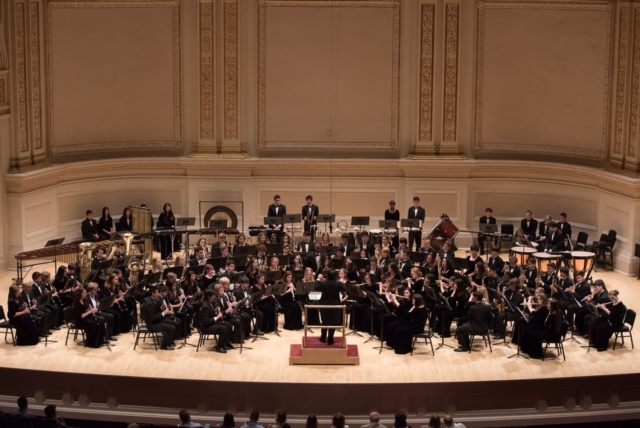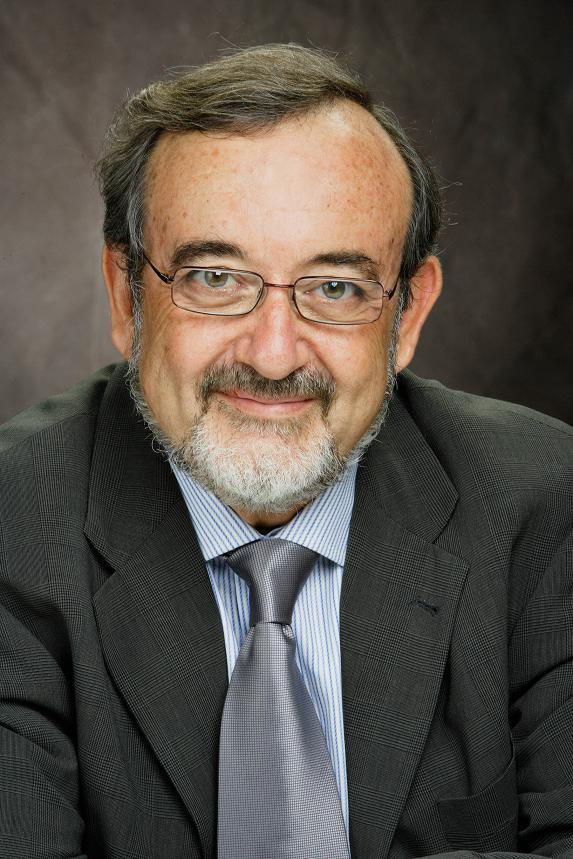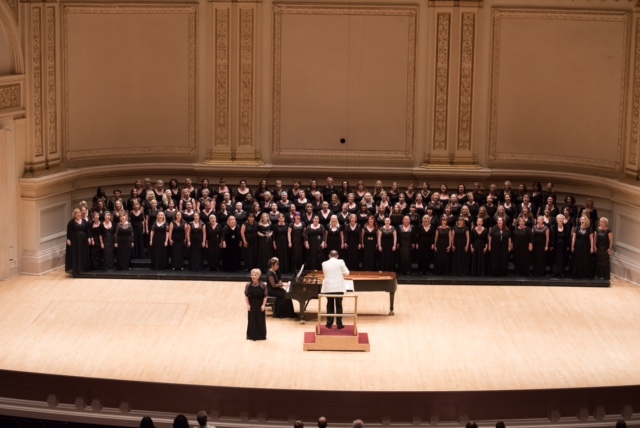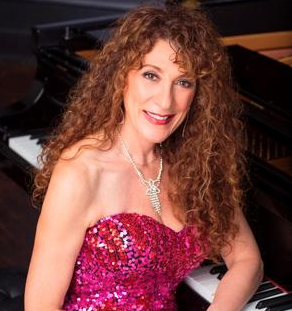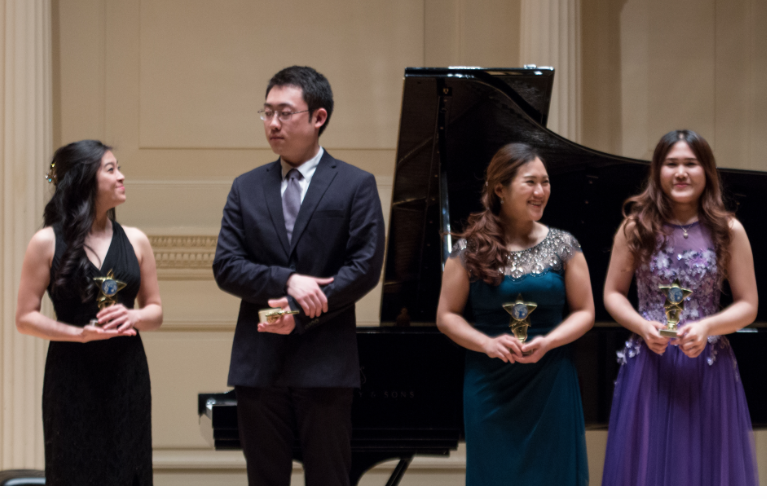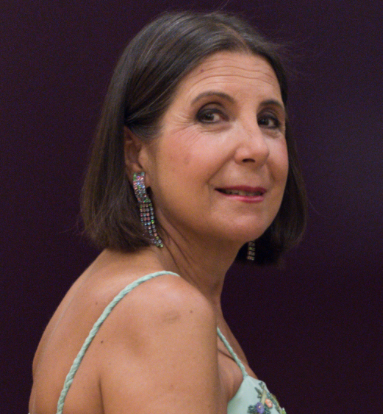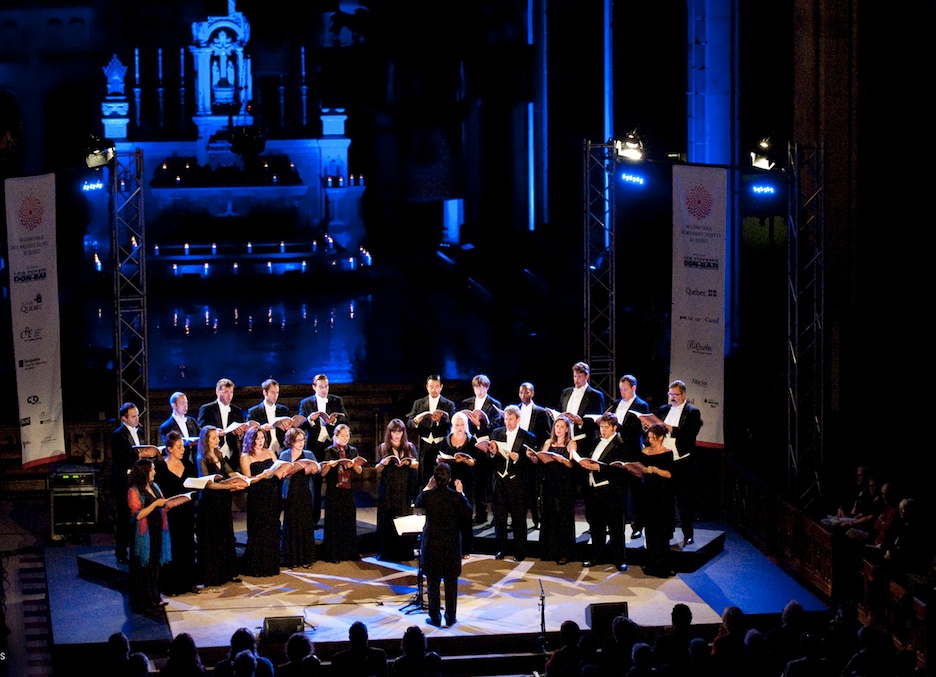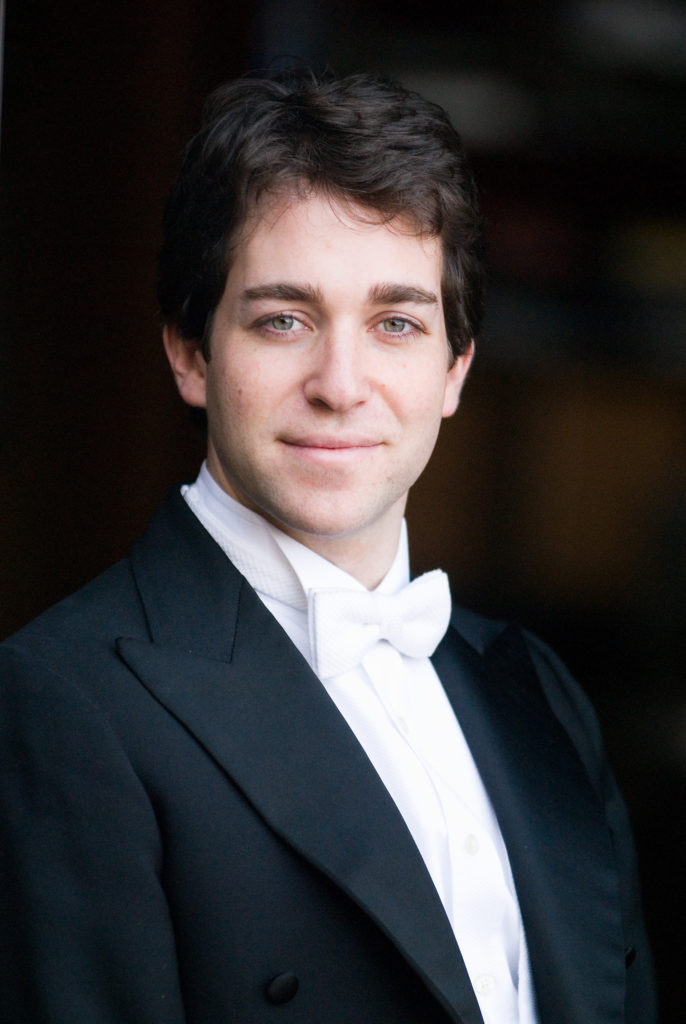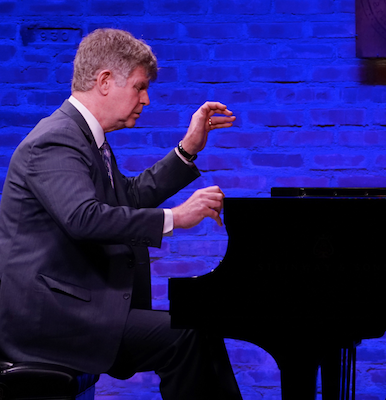Distinguished Concerts International New York (DCINY) presents On the Winds of Song: An Evening with Mira Costa High School (CA)
Mira Costa High School Wind Ensemble and Symphony Band; Joel Carlson, director
Mira Costa High School Philharmonic and Chamber Orchestras and Symphony Orchestra; Peter Park, director
Stern Auditorium at Carnegie Hall, New York, NY
May 29, 2016
Distinguished Concerts International New York (DCINY) continued their presentation of the second of two concerts for the Memorial Day weekend on May 29, 2016 at Stern Auditorium at Carnegie Hall. This concert, entitled On The Winds of Song, featured four ensembles (two bands and two orchestras) from Mira Costa High School in California. I was looking forward to this performance, both from the standpoint of hearing how the West Coast youngsters were going to compare to the excellent Midwest ensembles heard recently and because the program featured some of my favorite works and composers. Being a California native, I will admit I was silently rooting for them, but no free passes were to be issued, lest anyone imagine otherwise.
This reviewer has had the pleasure of hearing many talented young ensembles this year. They have generally followed a similar pattern – some nervousness at the onset (most often intonation and balance issues) that fades as the players settle in. Confidence grows and the playing level follows accordingly, with a strong finish. I can (and do) offer advice on how to deal with these issues. Tonight was different – there was not even a trace of hint of any nervousness whatsoever in any of the four ensembles. My usual litany of suggestions was unneeded, and this was unexpected! These ensembles all came to play, and play did they ever! This suggested to me a level of preparation that I would expect from a college or professional ensemble. For that, one must credit the excellent directors Joel Carlson (bands) and Peter Park (orchestras) – neither one needs my help!
The Wind Ensemble, led by Joel Carlson, took the stage to open the concert. Armenian Dances (Part 1), a rhapsody using four folk songs from the “Father of Armenian Music” Gomidas Vartabed (also known as Komitas) and arranged by Alfred Reed, was a terrific start. Balance, intonation, and articulation were all razor-sharp! The second movement of David Maslanka’s five-movement work Song Book for Flute and Wind Ensemble, with flute soloist Tanner Yamada, followed. The composer writes of this movement subtitled Solvitur Ambulando (It is solved by walking), “there is a centuries-old tradition that good ideas come from walking. It is a practice I have used in my creative work for some years.” It’s no secret that I am a fan of Maslanka’s work, and this is no exception. It is idiomatically written for the flute. Mr. Yamada plays with a maturity beyond his years, with a strong technique coupled with a rich, full-bodied tone. There were no instances of loss of intonation in the extreme high register, no breathiness in sustained notes, and no amorphous articulation in rapid passages. The audience rewarded Mr. Yamada with a standing ovation. When Jesus Wept, as adapted by William Schuman followed. Kudos go to the trumpets for skillful playing of Schuman’s decidedly unidiomatic passages. Eric Whitacre’s Equus was a crowd-pleasing close.
The Symphony Band was up next, and Leonard Bernstein’s Overture to Candide, one of the staples of the band repertoire, was their opener. This work is full of whimsy and subtle sarcasm, which the young players captured in fine style. Old Churches by Michael Colgrass led the listener to imagine himself in an old monastery, and John Phillip Sousa’s Manhattan Beach March was a clever follow-up. Mira Costa High School is in Manhattan Beach, CA, so the latter paid tribute to New York’s Manhattan Beach while drawing its connection to New York. It was played with careful attention to subtle detail that is so often missing when Sousa’s marches are (bombastically) played. The modern classic Havendance, which put composer David Holsinger on the map, ended their selections. It’s one of the most fun works in the band repertoire, but it is demanding and difficult to pull off in performance. I’ve heard a few too many less-than-stellar attempts, but there was nothing to worry about here. Simply put, the Symphony Band “nailed it!” What a great closer it was!
Next up was the Philharmonic and Chamber Orchestras, led by Peter Park. The aptly named Jubilant Overture by Joshua Reznicow opened. Brimming with energy and joy, it is an embodiment of Americana and the fiddling tradition. The large forces blended together effectively, and the articulation and bow-work was some of the best I’ve seen or heard at this age level. Vassily Kalinnikov’s 1891 Serenade for Strings was up next, and the lyric, sometimes melancholy themes were played without being maudlin, a common drawback with less well-prepared and less talented groups. It was the highlight of their selections.
I must express my one true reservation with the evening, and that was the Danza Final from Alberto Ginastera’s Estancia. This all-strings arrangement simply is lacking the machismo that is so important to the spirit. It’s not the fault of the players, but there was not a drop of machismo to be found. Play the full version please! You have the forces and the talents. It would rock the house!
The Symphony Orchestra took the stage for the final segment. Carl Maria Von Weber’s Jubel Overture got things off to a fine start. The World Premiere of Serenade for Strings by Lee Holdridge, which was written especially for the Mira Costa High School Symphony Orchestra, followed the Weber. Dedicated by the composer “to so many friends lost over recent years,” it suggests a nostalgic look at fond memories, with a tinge of sadness, but not despair. The work was played in tribute to Mr. Park’s late father-in-law, Dr. James Cavallaro. Mr. Park was visibly moved by the audience reaction to this work.
After the emotionally charged Serenade, it was time to get to the fun, and Gershwin’s Rhapsody in Blue, featuring alum Brian Zukotynski, fit the bill perfectly. I would have preferred an open-lid piano to the lidless one used, as the sound of the piano goes straight up instead of out, making the pianist’s job of projecting that much more difficult. One must admit that Mr. Zukotynski did a fine job in making himself heard without resorting to pounding.
Clarinet soloist Cameron DeLuca won me over. I’ve heard a lot of players give that famous opening the characteristic “wail”, but this was something special!
Mr. Zukotynski has undoubted talent and an affinity for this work. His interpretation was not “cookie cutter”, but also was not eccentric or affected, like some players feel they must do to “put their mark” on the piece. All the dazzle is “baked in the cake,” and Mr. Zukotynski clearly grasped that concept. With the orchestra’s first-rate support, it was the highlight of the evening, and the ovation was well deserved for both soloist and orchestra.
After the Rhapsody, a charming arrangement of Tico-Tico no Fubá (Sparrow in the cornmeal), made popular by Carmen Miranda, served as a built-in encore that closed the night in a joyful way. The audience loved it and the ovation was loud and long. Congratulations, Mira Costa High School Bands and Orchestras!

